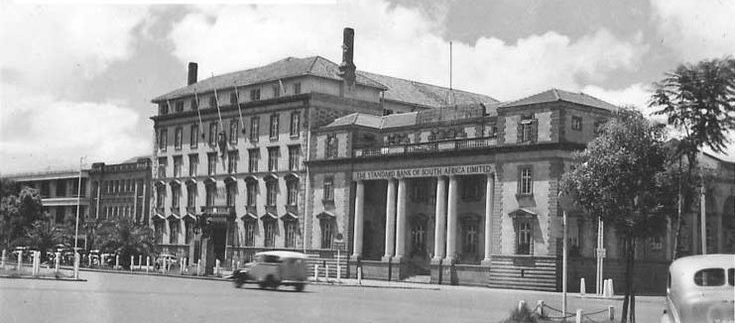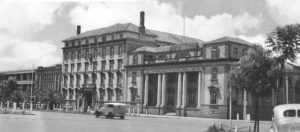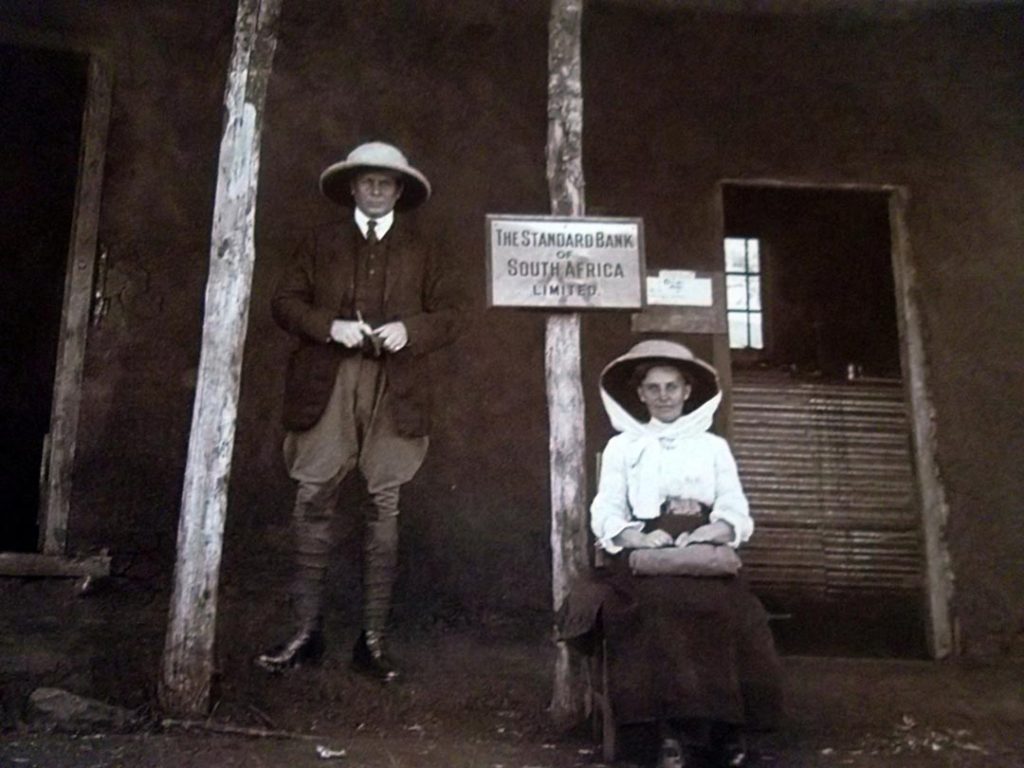Standard Bank of South Africa

Image credit: Meghji Shamji Shah

Standard Bank of South Africa on Delamere Avenue. Image credit: Meghji Shamji Shah
The Standard Bank of South Africa has one of the most unique histories when you consider the backgrounds of most financial institutions in Kenya. Established in London in 1862, the bank’s first branch in Africa was set up in Port Elizabeth in 1863 and named the Standard Bank of British South Africa. The British had claimed South Africa from The Dutch and at that time, it was one of the largest producers of diamonds. The bank was responsible for the financing of the burgeoning mining industry around Kimberley in the Northern Cape Province. Gold was then discovered in Witwatersrand and the bank expanded its operations northwards. It became the first bank to establish a branch at the gold fields.
Expanding to Kenya
In that same period new opportunities sprung up across South and East Africa and the bank wanted to capitalise on them. New economies were on the rise as more European merchants and administrative officials moved to Africa in search of new beginnings. In Kenya, the bank opened its doors on the morning of January 11th 1911 in Mombasa on Treasury Square. That same year, the Nairobi branch opened at the corner of Delamere Avenue and Eliot Street (Kenyatta Avenue and Wabera Street). This building in Nairobi is one of the oldest structures still in operation. The bank leveraged on the Kenya-Uganda railway line’s opening up of the East Africa interior.
In 1912, Standard Bank of South Africa opened a third branch – this time in Eldoret. This came about in rather comical circumstances. Some South African Boers who had travelled northwards into Kenya were looking for new lands for farming. With them were all their possessions which included a safe containing their money. They had their eyes set on the greater Uasin Gishu area and so they offloaded the safe from an ox-wagon. But they were unable to move it anywhere. This forced the Boers to build a bank around the safe, forming the Standard Bank of South Africa’s branch in Eldoret.
Mastering the Craft
The bank’s target market were the European settlers of the East Africa Protectorate. They didn’t see the need to include Africans in their plans as Africans were being serviced by another bank: the Post Office Savings Bank. When the Protectorate became a Colony in 1920, the bank saw considerable growth. This was despite external factors such as the First World War and the Great Depression as more Europeans and Indian traders increased deposits.
During these early years, the branches in other African states reported to the South African headquarters in Cape Town. The head quarters then relayed the information to the head offices in London. This was not the case for the branches in Kenya which had increased operations and networks. In 1926, Kenya started reporting directly to London because their requirements had surpassed the South African limits.
Growth and Transitions
The bank grew in the 1950s and 60s but international economic sanctions against South Africa increased leading to a number of changes. In 1962, the bank transferred South African operations to a subsidiary company called The Standard Bank of South Africa Ltd. The bank across Africa changed the name to The Standard Bank Ltd. Seven years later, the bank merged with another British-owned bank: The Chartered Bank operating in India, China and Australia – to form the Standard Chartered Bank.
In the following two decades, as a result of the sustained apartheid in South Africa, more sanctions were imposed on the country and the bank was under serious pressure. The Standard Chartered Bank reduced its stake in the parent company. It eventually disposed of it in 1987 to South African investors. In this way the Standard Chartered Bank remained a separate bank from the Standard Bank of South Africa.
A New Chapter
When Nelson Mandela became South Africa’s first president in 1994, apartheid came to an end. This meant a new chapter for the bank. The Standard Bank of South Africa again went after other African markets by acquiring the branches of ANZ Grindlays Bank: two of them in Kenya. This was through a subsidiary company called Standard Bank Investment Corporation. To avoid confusion with their rival Standard Chartered, these new branches earned the name Stanbic Bank. In 2007, Stanbic managed to pull the biggest bank merger in Kenya. It partnered with the local CFC Bank thereby creating the CFC-Stanbic Bank. We know it today simply as Stanbic Bank with over 25 branches across the country.
Clearly, history has a lot tucked under its sleeve. Who would have thought one bank would have birthed two separate entities that are now competitors?





